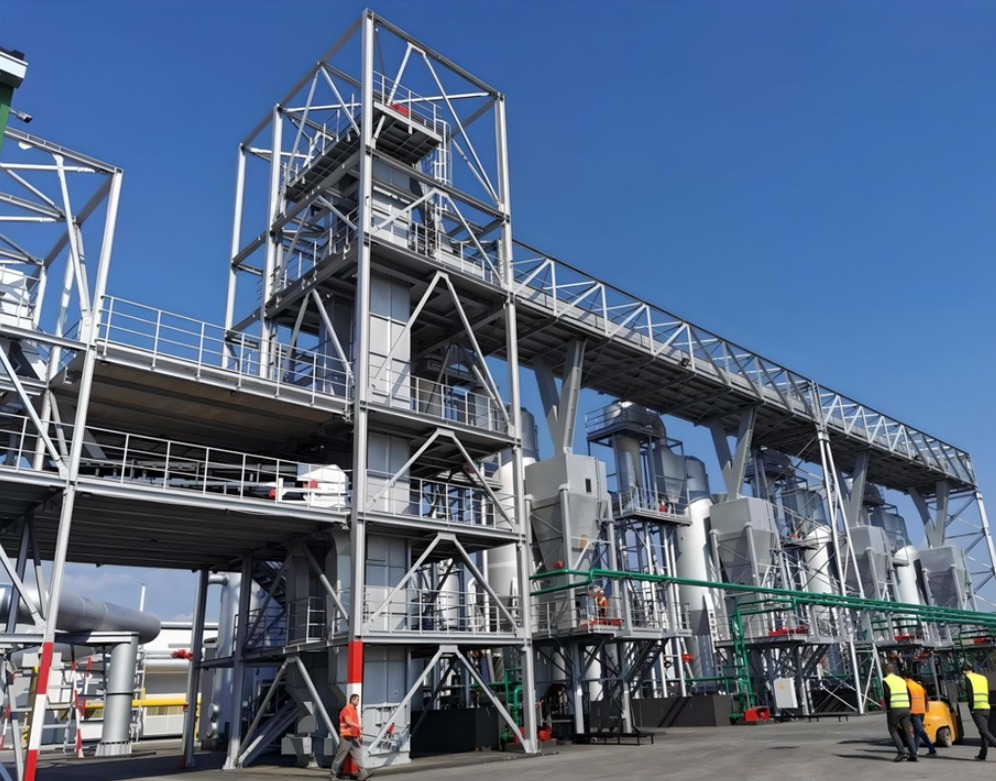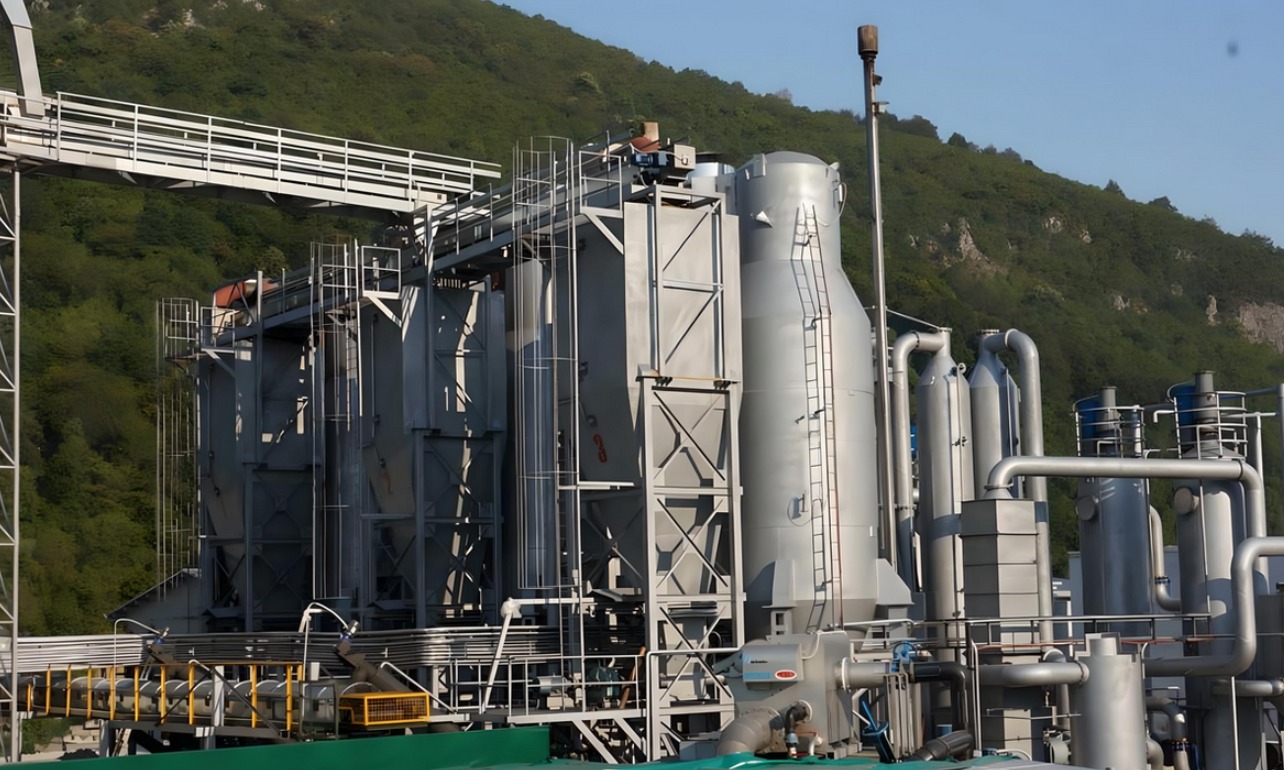MSW Management
Municipal Solid Waste Video
Municipal Solid Waste Video

Municipal Solid Waste Photo

Municipal Solid Waste Photo
Importance of Proper Waste Disposal
The significance of responsible waste disposal and its impact on health and environment.
Types of Waste
Understanding different waste categories: organic, inorganic, recyclable, and hazardous.
Waste Collection and Segregation Methods
Effective strategies for collecting and segregating waste at source.
Bio-CNG Production
A Compressed Biogas Plant, also known as CBG Plant, is a facility that produces clean and renewable energy from organic waste. The process involves converting biodegradable waste, such as food and agricultural waste, animal manure, and sewage, into biogas through a process called anaerobic digestion. The biogas produced is then compressed and purified to remove impurities, resulting in a high-quality fuel known as Compressed Biogas (CBG).
CBG Plants can be set up at different scales, depending on the availability of feedstock and the energy demand. Small-scale plants can be set up at farms, households, or small communities, while large-scale plants can be set up at industrial or municipal sites. CBG Plants can also be integrated with existing waste management systems, such as landfill sites, to capture and utilize the biogas generated.
CBG is a versatile fuel that can be used for various applications, such as cooking, heating, transportation, and power generation. It is a clean and sustainable alternative to fossil fuels and can significantly reduce carbon emissions, air pollution, and dependency on imported fuels. CBG also has a high energy density and can be stored and transported easily in compressed form.
CBG manufacturing plants are specifically designed to produce compressed biogas (CBG) by compressing the biogas to reduce its volume and increase its energy density. CBG production plants typically include a biogas upgrading system, which removes impurities such as carbon dioxide and moisture from the biogas to produce a purer form of methane. The resulting CBG can be used as a substitute for natural gas in vehicles, industrial processes, and other applications.
Setting up a CBG Plant can bring multiple benefits, such as generating revenue from waste, reducing waste disposal costs, creating jobs, and contributing to sustainable development. The technology is mature and proven, and the market for CBG is growing rapidly, creating opportunities for entrepreneurs and investors.
Biogas plants and CBG production plants are important components of the circular economy, as they allow waste materials to be recycled and repurposed as a valuable resource. By diverting organic waste from landfills and incineration facilities, biogas plants and CBG production plants can help reduce greenhouse gas emissions and contribute to a more sustainable future.
If you're interested in investing in a biogas plant or CBG production plant, there are a few key considerations to keep in mind. First, it's important to choose a site that is easily accessible to sources of organic waste, such as agricultural or food processing facilities. Second, you'll need to invest in equipment and infrastructure to collect, transport, and process the waste materials. Finally, it's important to have a reliable market for your CBG, such as a local bio company or other potential customers.
What are the Five areas of Compressed Biogas Plants ?
The Reception Area
One of the most important components of the plant, the reception area or the land ahead of the entire setup is used for loading and unloading of raw materials arrived for the preparation of anaerobic digestion. Different biomass has different fermentation processes hence, depending on the raw materials used the overall length of the biogas production process varies. Using pre-treatments for accelerating the fermentation process and enhancing the production process is a common practice.
The Digester Area
A waterproof airtight container with a means of entry for biomass, the digester contains all the waste to be transformed into energy. Then, to shift the biomass periodically to enable the gases and prevent the formation of layers, agitators come into action. After the fermentation, a digester via pipe enables the digest to be removed.
Purification area
The gas holder is an airproof container aimed to collect various gases during the fermentation process. Provided a gas outlet which enables biogas to come out of the digester to get purified to CBG via a gas purification system (PSA).
Filling Area
The final good in the form of gas will now shift to the filling area. Here, the compressed biogas will be filled into cascades. These are the cylinders into which, gaseous are secured and ready to be sent to pumps.
Bio Fertilizer Area
As the final good is prepared, the waste produced by the plant transforms into two different elements, slurry (Liquid fertilizer) and Organic manure (Solid fertilizer). Our organization also looks for slurry and organic manure as these two are highly beneficial for farming. Hence, we buy back all the final goods produced by the plant.
Why you must establish a Compressed Biogas Plant ?
Green clean energy is one of the fastest-growing industries worldwide. The global renewable energy market is anticipated to drive growth at a CAGR of 8.6% from 2023 to 2030. Additionally, in the current scenario, green energy is one of the most secure industries to dive into. The government has already initiated multiple schemes to support this industry. It is both environment and pocket friendly from the investor's perspective. Let’s have a core understanding of the benefits that come with the CBG Manufacturing Plant.
Investor Benefits
Lifetime business for the generation
Lifetime return on sales
Increasing demand for renewable energy
Low risk with consistent earning and business growth
Company support
100% Production Buyback
World-class training for seamless operations
Collateral-free loan assistance up to Rs. 2 Crore
State Art Plant & Machinery with a robust supply chain
Government support
Income tax holiday for five years
GST benefit on Compressed Biogas Manufacturing Plant
Subsidised rate of interest on the loan
Waiver on land Conversion charges
Waste to energy program (Ministry of New and Renewable energy) The objective is to promote the setting up of projects for the recovery of energy in the form of Biogas, Municipal solid waste, and Biomass gasifiers.
National Policy of Biofuels (Ministry of Petroleum and Natural Gas) The policy has been made to build the Biofuels market in India which has a strategic significance to meet the goal of the ongoing government initiatives like Swachh Bharat Abhiyan and Make in India.
Biogas scheme (Ministry of New and Renewable Energy) The objective of the scheme is to support Biomass based Cogeneration Projects in Sugar mills and other industries for power generation in the country. (source: MNRE)
SATAT initiative (Ministry of Petroleum and Natural Gas) The objective of the scheme is to set up CBG plants and produce and supply CBG to encourage entrepreneurs.
Technology and Innovation
Waste-to-Energy Technologies
Discussing various technologies like incineration and gasification.
Advanced Recycling Technologies
Overview of innovative sorting and processing techniques.
IoT Applications in Waste Management
Utilizing IoT for smart waste management solutions.
Sustainability and Environment
Climate Change Mitigation
Role of effective waste management in reducing climate impact.
Biodiversity Conservation
How proper waste management practices benefit biodiversity.
Community Engagement and Education
Importance of community involvement in sustainability initiatives.
Economic and Social Aspects
Economic Benefits of Waste Management
Exploring the financial advantages of effective waste practices.
Job Creation Opportunities
How waste management can create employment opportunities.
Public-Private Partnerships
Benefits of collaboration between public and private sectors.
Case Studies and Success Stories
Successful MSW Management Projects
Highlighting notable projects that have achieved success in waste management.
Innovative Waste Management Technologies
Exploring cutting-edge technologies that have made a difference.
Community-Based Initiatives
Examining grassroots efforts in waste management.
Infographics and Visuals
Waste Management Process Flowcharts
Visual representations of waste management processes.
Statistics on Waste Management
Infographics showcasing key statistics in waste management.
Success Stories Visualized
Infographics depicting successful case studies.
